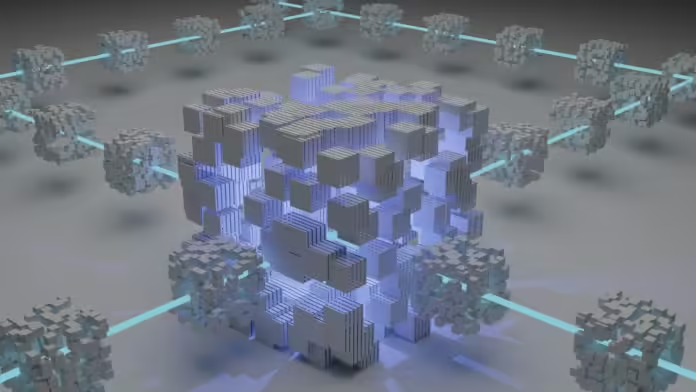The net has gone through extensive changes because its inception. From the static internet pages of Web 1.0 to the interactive, social platforms of Web 2.0, every iteration has added new abilities and approaches for humans to attach and proportion information. Now, we stand on the point of any other important evolution: Web 3.0, also referred to as the decentralized net, powered with the aid of blockchain generation. This new phase guarantees to revolutionize how we have interaction with the digital global, presenting more control, privacy, and safety.
What is Web 3.0?
Web 3.0 represents the subsequent generation of internet generation, characterized via decentralized networks that use blockchain to create a greater open, transparent, and user-centric web. Unlike Web 2.0, which is based closely on centralized servers and intermediaries, Web 3.0 aims to remove those middlemen, permitting users to have interaction without delay with each other and with decentralized programs (dApps).
Key Features of Web 3.0
Web 3.0 brings numerous key features that distinguish it from its predecessors:
Decentralization

- Distributed Networks: Unlike centralized networks where facts are saved on single servers, Web 3.0 utilizes allotted networks.
This manner of statistics is saved throughout a couple of nodes, lowering the chance of information breaches and outages.
- Peer-to-Peer Interactions: Users can have interaction without delay with every other without having intermediaries, inclusive of social media platforms or online marketplaces. This direct interplay is facilitated through blockchain technology, which ensures statistics integrity and safety.
Enhanced Privacy and Security
- Data Ownership: In Web 3.0, customers have greater control over their data. Blockchain era permits people to personal and control their personal facts, finding out who can get entry to it and how it is able to be used.
- Secure Transactions: Transactions on the decentralized web are secured via cryptographic methods, making them much less susceptible to fraud and hacking.
Smart contracts, which might be self-executing contracts with the phrases written into code, similarly beautify safety through automating and verifying transactions.
Interoperability
- Seamless Integration: Web 3.0 ambitions to create a continuing experience across unique systems and programs. Interoperability between numerous blockchain networks will enable users to transfer facts and belongings without difficulty, without being locked right into a single environment.
- Standardized Protocols: The use of standardized protocols will facilitate communique and interaction among exclusive dApps, making sure a cohesive and unified net experience.
The Role of Blockchain in Web 3.0
Blockchain technology is the backbone of Web 3.0, supplying the infrastructure needed for decentralization, safety, and transparency. Here are some methods blockchain contributes to the development of Web 3.0:
- Immutable Ledgers: Blockchain’s immutable ledgers make certain that when records are recorded, it can not be altered or deleted. This creates a permanent and obvious file of all transactions and interactions.
- Smart Contracts: Smart contracts automate approaches and implement agreements without the want for intermediaries. They execute automatically while predefined situations are met, lowering the hazard of human blunders and enhancing agreement with.
- Tokenization: Blockchain enables the tokenization of belongings, allowing virtual and physical assets to be represented as tokens on a blockchain. This helps possession switch, fractional ownership, and the introduction of new monetary models.
Applications of Web 3.0
Web 3.0 has the capability to transform numerous industries and create new opportunities. Some first-rate applications consist of:
Finance
- Decentralized Finance (DeFi): DeFi structures permit users to get right of entry to financial services, including lending, borrowing, and trading, without relying on conventional banks. These services are supplied through clever contracts, making sure transparency and reducing prices.
- Cryptocurrencies: Digital currencies, like Bitcoin and Ethereum, are fundamental to the Web 3.0 ecosystem.
For those new to the space, information on how to buy Bitcoin and different cryptocurrencies is an essential step in collaborating inside the decentralized net.
Social Media

- Decentralized Social Networks: Web 3.0 gives options to conventional social media systems, where users can manipulate their content material and records. These decentralized networks purpose to do away with censorship and provide more privacy.
- Content Monetization: Content creators can monetize their paintings without delay through blockchain-primarily based structures, receiving payments in cryptocurrency without the want for intermediaries.
Supply Chain Management
- Transparency and Traceability: Blockchain technology can enhance supply chain control through presenting transparent and traceable records of products’ motion. This allows in verifying authenticity and making sure moral sourcing.
- Efficiency and Cost Reduction: Automated processes and reduced reliance on intermediaries can streamline supply chains, reducing fees and improving efficiency.
Challenges and Future Prospects
While Web 3.0 holds monstrous promise, it also faces numerous demanding situations:
- Scalability: Blockchain networks need to handle a big range of transactions quickly and efficiently. Scalability solutions, along with layer 2 protocols and sharding, are being evolved to deal with this problem.
- User Adoption: For Web 3.0 to succeed, it needs to achieve vast user adoption. This calls for consumer-friendly interfaces and training on the benefits of decentralized technologies.
- Regulatory Hurdles: The regulatory surroundings for blockchain and cryptocurrencies are still evolving. Clear and supportive policies are important for fostering innovation and protecting customers.
Web 3.0, powered by blockchain technology, represents a significant leap forward in the evolution of the internet. By offering decentralization, enhanced privacy, and improved security, it promises to create a more open and user-centric web. While challenges remain, the potential applications and benefits of Web 3.0 are vast, poised to transform industries and redefine how we interact with the digital world.
As we navigate this transition, embracing the principles of Web 3.0 will be key to unlocking its full potential and shaping the internet of the future.
Discover more from BITVoxy
Subscribe to get the latest posts sent to your email.



